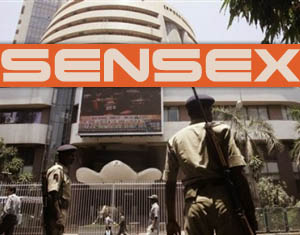World Market Watch: Nirmal Bang Securities
 Asian stocks declined in the morning as commodities prices and shipping rates dropped amid concern the global economic recovery will falter. Crude oil fell to the lowest in five weeks on a stronger dollar and speculation U.S. fuel inventories will increase as the recession curbs demand in the world’s biggest energy?consuming country.
Asian stocks declined in the morning as commodities prices and shipping rates dropped amid concern the global economic recovery will falter. Crude oil fell to the lowest in five weeks on a stronger dollar and speculation U.S. fuel inventories will increase as the recession curbs demand in the world’s biggest energy?consuming country.
European stocks dropped for a third straight week, the longest stretch of losses since March, as concern mounted that the economy won’t recover soon.
The yen strengthened against the euro and the dollar on concern credit?market losses will keep increasing in Europe and the U.S., spurring demand for the relative safety of Japan’s currency. The dollar and the euro fell after Russian President Dmitry Medvedev said the world is too reliant on the two currencies, damping the appeal of U.S. and European assets.
Suresh Tendulkar, an economic adviser to Indian PM, said in a July 3 interview that he is urging his country to diversify its foreign holdings away from the dollar. China doesn’t support the idea of creating a supranational reserve currency and expects the U.S. dollar to remain the main reserve currency for “many years to come,” Deputy Foreign Minister He Yafei said on July 5.
The dollar and U.S. Treasuries are both likely to slide as soaring government debt in the world’s biggest economy undermines confidence in its assets, according to Jim Rogers, chairman of Rogers Holdings. Rogers said he expects commodities prices to climb, saying it’s one of the few asset classes with improving fundamentals.
China, the world’s biggest buyer of iron ore, faces the risk of higher cash prices as annual contract talks stall with producers. Ore for immediate delivery rose to a four?month high of $82.50 a metric ton in the week ended July 3, according to Metal Bulletin. The China Iron & Steel Association has rejected London?based Rio Tinto Group’s offer of a 33 % cut in annual prices, accepted by Japanese and South Korean mills, and let a June 30 accord deadline lapse.
The year?over?year profit slide for Standard & Poor’s 500 Index members may narrow to 21 % from July through September, after declines of an estimated 34 % in the second quarter and about 60 % in the year’s first three months, according to data compiled by S&P and Bloomberg.
In the budget to be announced today we will be mainly looking for the deficit figure. If it is anything above 6.5% of GDP, it will not be taken good for the market.